As standard the z22se engine in the VX220 has an EGR system, also known as an
exhaust gas recirculation system. The ECU controls a valve which allows a
certain amount of exhaust gasses to be inserted just behind the throttle
valve. This might sound strange and inefficient, but it has its advantages. [egr.nl.jpg egr.png egr.thumb.png egrthrottle.png egrthrottle.thumb.png fueltrims.png fueltrims.thumb.png intakemanifold.nl.jpg]
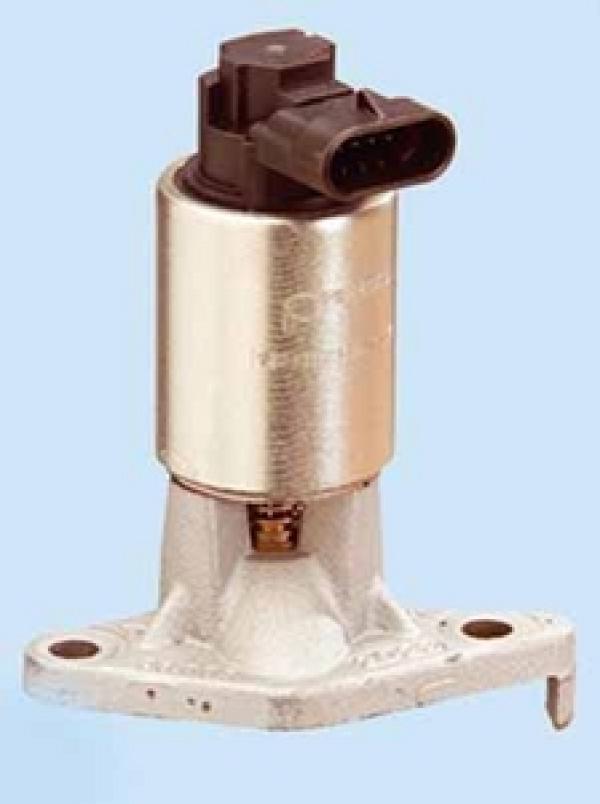 How EGR worksThe idea is to add the exhaust gasses to the outside air that is going to
enter the engine. The exhaust gasses don’t contain any oxygen anymore,
only gasses like nitrogen (N2), carbon dioxide (CO2)
and small amounts of other oxides, which all don’t take part in the
combustion process. [egr.nl.jpg egr.png egr.thumb.png egrthrottle.png egrthrottle.thumb.png fueltrims.png fueltrims.thumb.png intakemanifold.nl.jpg]
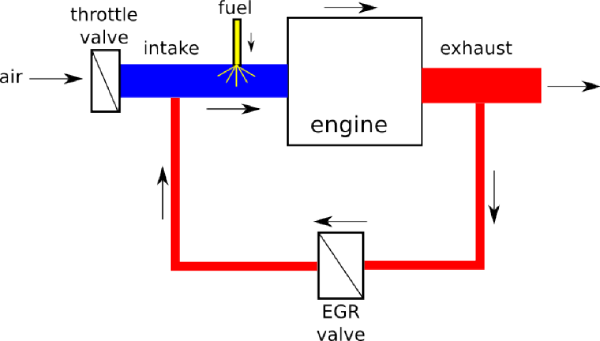 The total volume of air and exhaustgasses in the intake manifold is larger
then it would be without the activated EGR valve. This also increases the
pressure in the intake manifold. When the engine tries to suck the combined
gasses into the cylinders, it takes less effort. Compare it to sucking air
through a straw with your finger almost closing the other side. When you
lift your finger more, it will take less effort to suck the air through. The total volume of gas entering the engine contains relatively little
oxygen due to the addition of the exhaust gasses. The ECU needs to adjust
the amount of fuel it adds to the actual amount of oxygen in the gas mixture.
Because the total amount of fuel is low compared to the total gas volume,
the heat during combustion is lower. These lower temperatures will make
the combustion process slower. The ECU needs to compensate the ignition
timing. Because combustion is slower, the ignition needs to take place
earlier to make sure cylinder peak pressure takes place at the correct
time. Another effect of the lower combustion temperature is the lower
amount of nitrous oxides (NOx) that are formed during
combustion, which is good for the quality of the exhaust gasses. When the EGR isn't usedWhen the engine needs to deliver peak power, it isn’t useful to add
exhaust gasses. In this situation the maximum amount of energy needs to be
delivered, so maximum amounts of fuel and oxygen are needed. The EGR valve is also not used during idle. Idle is a relatively difficult
process for the ECU, because very small amounts of air are involved. Making
a good air/fuel mixture is difficult. This situation would be made worse
when adding exhaust gasses, making it impossible to get a steady idle. Unfortunatly the system isn’t without problems. The actuation of the valve
can become a problem (wear and contamination) which can lead to fault codes.
And it makes the rear of the throttle valve and the intake manifold quite
dirty. [egr.nl.jpg egr.png egr.thumb.png egrthrottle.png egrthrottle.thumb.png fueltrims.png fueltrims.thumb.png intakemanifold.nl.jpg]
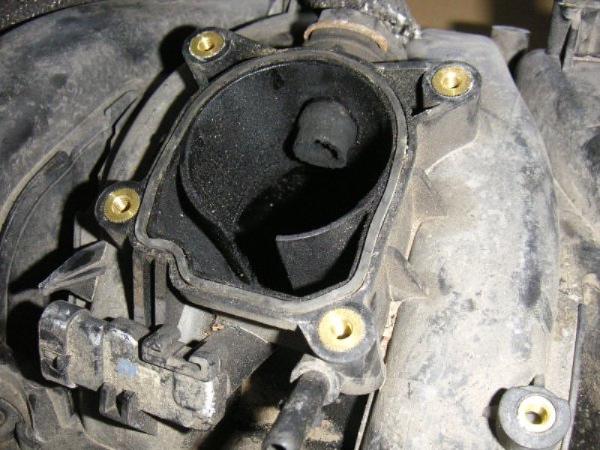 EGR adjustmend by the ECUThe ECU on the z22se adjusts the EGR valve mainly on the calculated (estimated)
combustion temperature. When running on partial load the amount of exhaust gasses
allowed in by the ECU through the EGR rises with the increase of the temperature.
Of course the ECU adjusts the amount of fuel accordingly. The graph below demonstrates the adjustment of the EGR. The red line is the
throttle valve position (0 to 100%) and the blue line represents the EGR
valve position (0 to 100%). The graph clearly shows the EGR only active on
part throttle. When the engine load increases (in this graph when the throttle
valve opens above 50%) the EGR valve is closed again. [egr.nl.jpg egr.png egr.thumb.png egrthrottle.png egrthrottle.thumb.png fueltrims.png fueltrims.thumb.png intakemanifold.nl.jpg]
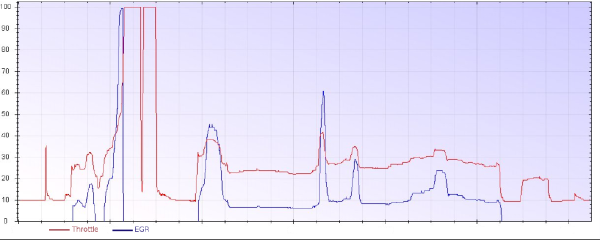 There are situations where the EGR valve is removed from the engine or a
cover is placed to prevent exhaust gasses from entering the intake. The ECU
will still continue adjusting the EGR valve as if there is still one
connected. The ECU will compensate for the extra exhaust gasses it thinks
it is adding. The amount of fuel and timing of the ignition are adjusted for
this. But these corrections are no longer correct. By using the feedback from
the lamdba- and knocksensor the ECU will effectively try and correct its own
adjustments. This situation of course isn’t optimal and can lead to quite
significant adjustments in fueling and ignition. The graph below shows the ECU is making some major adjustments in fueling by
using the long- and shortterm fuel trims. This was recorded on an engine
with a disabled EGR valve, but with the adjustment in the ECU still active. [egr.nl.jpg egr.png egr.thumb.png egrthrottle.png egrthrottle.thumb.png fueltrims.png fueltrims.thumb.png intakemanifold.nl.jpg]
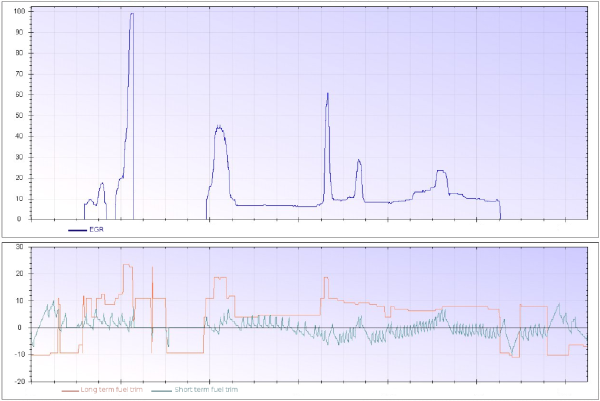 When tuning an engine which no longer has an EGR valve, but still has the
adjustments active in the ECU, it is very difficult to make an accurate base
fuel table. It is much better to deactivate the EGR adjustment in the ECU.
When comparing two base fuel tables before and after deactivation of the EGR
adjustment, changes can be well over 10%. An important conclusion is that when deactivating the EGR (by either only placing
a cover or placing a “cheater”) it has big consequences for fueling and ignition.
It is much preferred to deactivate the EGR adjustment in the ECU and build a new,
corrected base fuel table. |